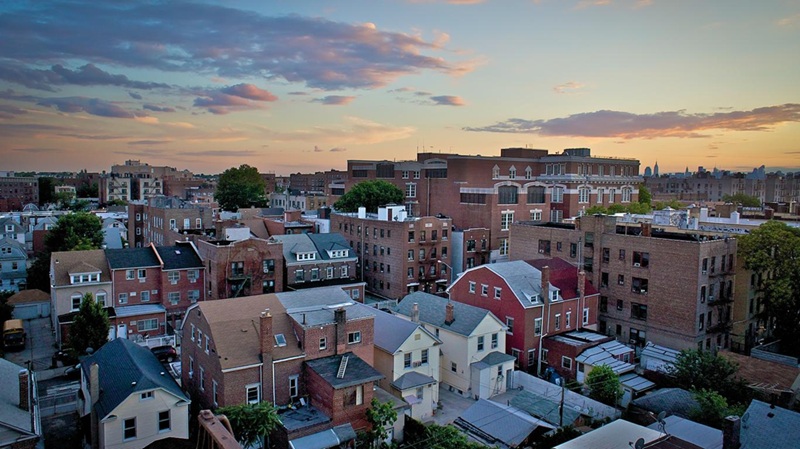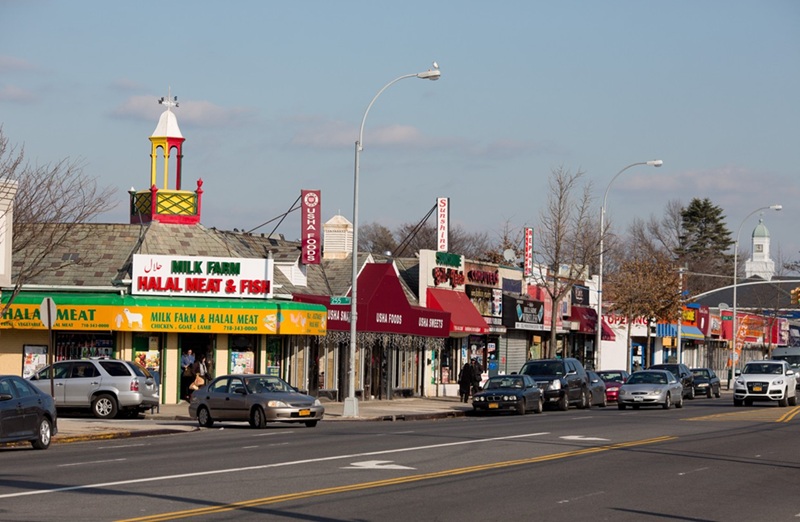
Located in the heart of Queens, Elmhurst is a dynamic and diverse neighborhood that has long been an attractive place to live for families, immigrants, and professionals. Known for its strong sense of community, rich cultural heritage, and convenient location, Elmhurst continues to evolve as one of Queens’ most sought-after areas. Whether you’re drawn to its thriving food scene, excellent transportation links, or its diverse mix of residents, Elmhurst offers a unique urban living experience.
A Brief History of Elmhurst
Elmhurst’s history dates back to the 17th century when it was originally inhabited by the Lenape people before being settled by the Dutch in the early 1600s. Throughout the 19th century, it was a primarily rural area, with farmlands and estates dominating the landscape. In the early 20th century, the area began to urbanize, as the city of New York expanded outward, and Elmhurst transformed into a suburban-style neighborhood.
The neighborhood grew rapidly in the mid-20th century, especially following World War II, when waves of immigrants from all over the world arrived. Elmhurst became one of the most ethnically diverse neighborhoods in the United States, with significant populations of people from China, Latin America, Southeast Asia, and beyond. Today, Elmhurst remains one of the most culturally rich areas of Queens, with residents from a wide array of backgrounds contributing to its vibrant community.
A Melting Pot of Cultures
Elmhurst is known for its stunning cultural diversity, with residents from all corners of the globe making up the fabric of the neighborhood. One of the most noticeable features of Elmhurst is its abundance of international cuisine, thanks to the many ethnic groups that call the neighborhood home. Whether you’re in the mood for Chinese dim sum, Latin American street food, or Filipino delicacies, Elmhurst offers an incredible variety of restaurants, markets, and grocery stores reflecting the tastes and traditions of its residents.
- Asian Influence: The neighborhood is home to one of the largest Chinese communities in Queens, particularly along Roosevelt Avenue and surrounding streets. Traditional Chinese markets, restaurants, and bakeries line the streets, serving everything from fresh dumplings to exotic teas and spices. Elmhurst also has a strong presence of Filipino, Thai, and other Southeast Asian communities, making it a true international food destination.
- Latin American Flavor: In addition to its Asian influence, Elmhurst has a significant Latino population, primarily from Ecuador, Mexico, and other countries in Central and South America. Latin American markets, bakeries, and restaurants are abundant, offering everything from tacos and empanadas to fresh fruits and authentic spices.
- Other Communities: Elmhurst also has a sizeable population of residents from countries such as India, Pakistan, and the Caribbean. These communities have helped to shape the neighborhood’s identity, creating a rich and welcoming environment where different cultures can coexist and thrive.
Neighborhood Character and Community
Elmhurst maintains a residential and somewhat suburban feel, despite its location within the bustling metropolis of New York City. The streets are mostly lined with a mix of low-rise apartment buildings, townhouses, and single-family homes, providing a variety of housing options for renters and homeowners alike.
The neighborhood offers a mix of newer construction and older buildings, giving it a layered character that is both modern and historic. Despite the increasing density of the area, Elmhurst has managed to maintain its small-town charm, with tree-lined streets, community parks, and a slower pace of life compared to some of the more high-energy neighborhoods of Queens.
Elmhurst has a strong sense of community, with residents of all ages, cultures, and backgrounds coming together. The neighborhood boasts several community organizations, local events, and places of worship, all contributing to its cohesive atmosphere. Local festivals, cultural celebrations, and block parties are common, helping to foster connections among residents.
Transportation and Accessibility
One of the key advantages of living in Elmhurst is its excellent transportation options, making it easy to commute to other parts of Queens, Brooklyn, and Manhattan. The neighborhood is well-served by multiple subway and bus lines, providing quick access to the rest of the city.
- Subway: Elmhurst is served by the 7 train, which runs along Roosevelt Avenue and connects the neighborhood to Manhattan in just 20 minutes. The E and F subway lines also serve nearby areas, providing additional connections to Queens and the city. The subway stations are typically just a short walk away, making commuting fast and convenient.
- Bus: Several bus routes run through Elmhurst, including the Q53 and Q58, making it easy to reach neighboring areas like Jackson Heights, Corona, and Forest Hills. The buses also provide connections to key transportation hubs like LaGuardia Airport and JFK Airport, which are located nearby.
- Road Access: Elmhurst is well-connected to major roadways such as the Long Island Expressway (LIE), the Grand Central Parkway, and Queens Boulevard, making it easy for drivers to reach different parts of the borough and beyond. The proximity to the airports also makes Elmhurst an ideal location for those who travel frequently.
Parks and Recreation
While Elmhurst may not have large parks like some other Queens neighborhoods, it is home to several smaller green spaces that offer residents opportunities for relaxation and recreation.
- Elmhurst Park: One of the main recreational spaces in the area, Elmhurst Park provides residents with green lawns, playgrounds, basketball courts, and walking paths. The park is often filled with families, joggers, and children playing, making it a popular gathering spot for the community.
- Corona Park: Just a short distance from Elmhurst, Flushing Meadows-Corona Park is one of the largest and most iconic parks in Queens. With its wide open spaces, sports facilities, and the famous Unisphere, the park offers endless opportunities for outdoor activities, from picnicking and jogging to exploring the Queens Museum or attending a local event.
- Recreation Centers: In addition to parks, Elmhurst has access to community centers that offer a range of programs for children, teens, and seniors, providing sports leagues, fitness classes, and arts programs.
Real Estate and Housing
Elmhurst offers a variety of housing options, from affordable apartments to more upscale homes. The neighborhood’s housing stock is largely made up of older, pre-war apartment buildings, although newer condos and developments are beginning to emerge in the area.
The cost of living in Elmhurst is generally more affordable compared to neighboring areas like Jackson Heights, Astoria, and Forest Hills, making it an attractive option for families, young professionals, and first-time homebuyers. While rent prices have increased in recent years due to the neighborhood’s growing popularity, Elmhurst remains a relatively affordable option for those seeking proximity to Manhattan without the high price tag.
Single-family homes in Elmhurst are also in demand, particularly in the quieter residential areas further away from the busy main streets. These homes tend to be more spacious than the typical New York City apartment, offering larger yards and more room for families.
Dining and Shopping
Elmhurst is a food lover’s paradise, with an incredibly diverse array of restaurants and markets offering flavors from around the world. Whether you’re craving spicy Szechuan cuisine, savory Mexican tacos, or Filipino adobo, you’ll find it in Elmhurst. The neighborhood’s food scene reflects its diverse population, with authentic dishes and international ingredients available in the many local markets and restaurants.
Additionally, Roosevelt Avenue serves as a major commercial corridor, lined with a mix of local stores, markets, and international shops. Whether you’re picking up fresh produce from a Latin American market or finding a unique gift at a small shop, Elmhurst offers an eclectic shopping experience.
Conclusion
Elmhurst, Queens, is a unique and thriving neighborhood that offers a blend of cultural richness, affordable living, and convenience. With its diverse community, excellent transportation options, and vibrant food scene, it’s easy to see why Elmhurst has become one of the borough’s most appealing places to live. Whether you’re a foodie, a family, or a young professional, Elmhurst offers a welcoming and dynamic environment that is sure to satisfy a variety of lifestyles. As the neighborhood continues to evolve, it remains a key part of the cultural fabric of Queens and a true gem in New York City.

